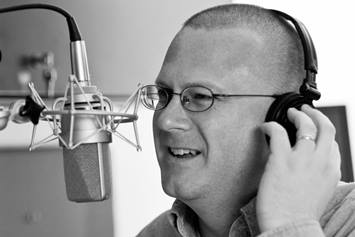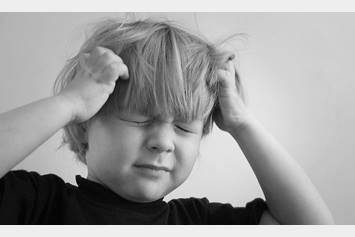Head Lice
Lice are tiny bugs that can live on your head. Head lice is very common - anyone can get it. It may cause some itching, but is usually easy to treat.
What Is Head Lice?
Lice are tiny, grayish-white bugs (insects) that can attach to hair. They make the head itchy by feeding on blood from the scalp. Head lice is very common. Anyone can get it.
Lice lay eggs (nits) on pieces of hair, close to the scalp. They may be yellowish-white to brown in color. You may only see nits on your child’s head because lice move fast.
How Does Lice Spread?
- Lice spread easily from person to person by:
- Head-to-head contact. This can happen when children are playing close to each other.
- Sharing personal items like clothes, hats, scarves, pillows, combs, brushes, hair accessories, or helmets.
- Pets do not carry human lice.
- Lice move by crawling. They cannot jump or fly.
How Is Head Lice Treated?
- To treat your child’s lice, they may need:
- Over-the-counter (OTC) or prescription lice medicine.
- Antibiotics if they have an infection from scratching their head too much.
- Remove nits with a nit comb or by hand. See ‘Removing Nits’ on page 2.
- Do not use mayonnaise, olive oil, tea oils, petroleum jelly, margarine, or butter on your child’s hair. These products do not get rid of lice and may be hard to wash out.
- Check everyone in your home for live every 2 to 3 days. Do this until no live lice are found for 10 days. No one needs to be treated unless they have lice.
- Tell your child’s school that they have lice. The school may check other students for lice.
Lice Medicine
Your child’s doctor or health care provider can recommend a shampoo, rinse, or lotion to kill lice or help with itching. These may be OTC or prescriptions.
- Follow the directions for any medicine or product you use. If it’s a prescription, follow the doctor or health care provider’s orders.
- A lot of head lice shampoos are insecticides. That means they have chemicals in them that kill lice. These can be dangerous if not used the right way. Do not leave a child alone with medicine in their hair.
- After using the medicine, check for lice again in 8 to 12 hours. Use a nit comb to remove dead lice and nits. If there are no dead lice, call your child’s doctor or health care provider. They may need a different medicine.
- Keep checking hair and using the nit comb every 2 to 3 days for 2 to 3 weeks. Do this until there are no more lice or nits in the hair.
Removing Nits
The comb-out method lets you check for nits and lice or remove them after treatment. This method alone may not get rid of lice. Head lice medicine is also needed.
After each medicine treatment, use the comb-out method every 2 to 3 days for 2 to 3 weeks to remove nits and eggs.
- Wet your child’s hair.
- Use a fine-tooth comb (lice or nit comb) and comb through your child’s hair in small sections.
- After each comb-through, wipe the comb on a wet paper towel. Examine the scalp, comb, and paper towel carefully.
- Repeat steps 2 and 3 until you’ve combed through all of your child’s hair.
Cleaning the Home
Clean any items your child used within 2 days before the head lice was found. Clean every 2 to 3 days after starting treatment until lice are gone.
- Machine-wash items in hot, soapy water. Dry them in a dryer using the hot setting for at least 20 minutes. Clean these items your child has used: clothing (including hats and coats), cloth hair accessories (scrunchies, hair ties, bandanas, scarves), towels and washcloths, bed sheets, blankets, and sleeping bags.
- Soak all combs, brushes, plastic hair accessories (headbands, clips), and helmets in one of the following:
- Hot water over 130° Fahrenheit (F) or 54.4° Celsius (C) for 10 minutes.
- Nix® Crème Rinse for 1 hour.
- Rubbing alcohol for 1 hour. After that, wash the items in hot, soapy water.
- Vacuum all carpets and furniture, including pillows, sofas, and beds.
- Do not use insecticides or hire a pest control company to treat your home. It is not needed. The strong chemicals may harm your child.
- For items that can’t be machine-washed, have them dry-cleaned or put them in a tightly sealed plastic bag for 3 days. Any lice or nits on these things will die in 2 days. Never place a plastic bag on a child’s head.
How to Prevent Head Lice
- Do not share pillows, combs, towels, brushes, hats, hoodies, wigs, scarves, hair accessories (hair ties, scrunchies, clips, headbands), helmets, or headphones.
- Check your child’s hair often during the school year. Check more often when there’s a lice outbreak at school.
When to Call the Doctor
Call your child’s doctor or health care provider if they have:
- A fever over 100.4°F (38°C).
- Been treated, but the lice are still active.
- Open, oozing sores or crusting on their scalp.
- Swollen lymph nodes in their neck.
Helping Hands™ Patient Education Materials
Helping Hands™ are easy-to-read guides about different illnesses, therapies, surgeries, and more. They’re created by the Patient Education team at Nationwide Children’s Hospital and are reviewed and approved by clinical staff, like nurses, doctors, pharmacists, and psychologists. Nationwide Children's Hospital is not responsible for misuse of information in patient education materials, including Helping Hands.
HH-I-49| ©1976, revised 2024, Nationwide Children’s Hospital


